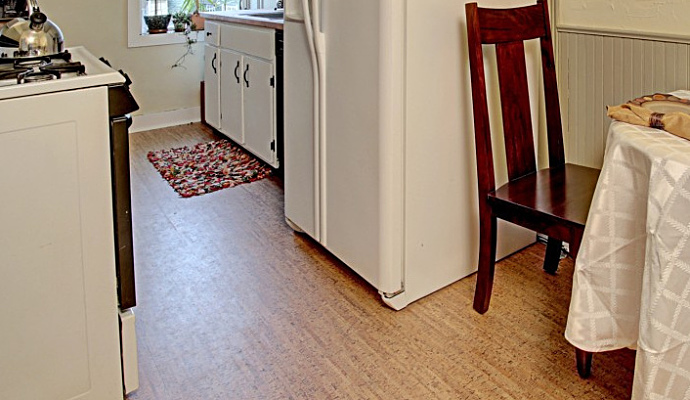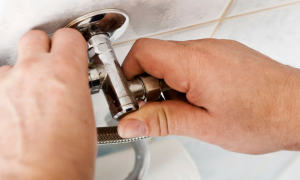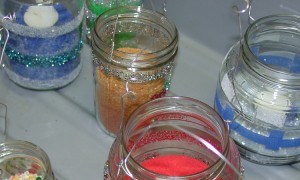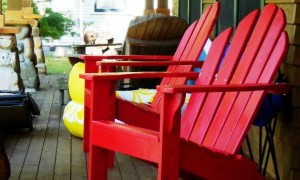Cork Flooring Makes a Comeback
After decades of unpopularity, cork flooring is making a comeback. Featured at a recent Philadelphia home show exhibit on green living, cork’s durability, unique texture, and renewable properties make it an attractive option for eco-minded homeowners.
After decades of unpopularity, cork flooring is making a comeback. Thanks to improved design options and an increasing demand for sustainable building materials, this staple of ’70s décor is once again finding favor with consumers. Featured at a recent Philadelphia home show exhibit on green living, cork’s durability, unique texture, and renewable properties make it an attractive option for eco-conscious homeowners.
What Makes Cork an Eco-Friendly Flooring Option
When cork is harvested, only the outer layer of bark is removed, allowing the tree to regenerate and live to an average age of 200 years. Additionally, cork-based flooring can be finished with water-based products, which decreases the amount of toxic chemicals circulating through your home.
The cost of cork varies, based on the intricacies of the selected flooring pattern and the overall quality of the material. According to Homewyse.com, expect to pay somewhere between $4.00 and $7.00 per square foot for cork installation in the Philadelphia area. Higher-range pricing typically includes cork products engineered for greater durability. Home improvement stores, such as Home Depot, sell cork flooring in prices ranging around $3.50 to $5.00 per square foot (pre-installation). While this is comparable to other hardwoods, it’s generally more expensive than bamboo, another product billed as eco-friendly.
Cork’s Unique Texture
The natural cushion of cork works well in kitchen areas, where individuals stand for longer periods of time. The material also is credited with superior noise absorption and excellent insulation, and is also billed as beneficial for allergy sufferers, as it’s mold and mildew resistant.
The softer texture of cork has a few drawbacks, however. It’s susceptible to denting and scarring. Water may also damage or stain cork flooring. As a result, cork may not be the best choice for below-grade areas, such as basements.
Maintenance Is Key
Dust and debris can mark cork over time, so a minimum of weekly cleaning is recommended. Avoid dragging heavy furniture or appliances over cork flooring to prevent
unsightly track marks or tears. If your cork flooring isn’t pre-finished, you’ll need to apply a sealer.
Due to recent flooring innovations, the quality and appearance of cork has come a long way since the ’70s. Newer options in a wider range of styles include easy-to-install click and lock planks, as well as cork tiles. Homeowners’ increasing interest in green living has made cork flooring a popular and viable alternative to less eco-friendly hardwoods.
Photo Source: Flickr
[cf]skyword_tracking_tag[/cf]





8 Comments
Cork Flooring Makes a Comeback | Janet Glowacki's Blog
May 8, 2014[…] post Cork Flooring Makes a Comeback appeared first on Coldwell Banker Blue […]
Soundproofing a Room: How to Reduce City Noise in Your Home | Janet Glowacki's Blog
January 13, 2015[…] dull some of the noise rising from apartments below. If you’re looking to add new flooring, cork flooring is well known for its sound-absorbing properties. Carpeting absorbs noise as well as providing […]
Soundproofing a Room: How to Reduce City Noise in Your Home | Joseph-Roland Joubert's Blog
January 13, 2015[…] dull some of the noise rising from apartments below. If you’re looking to add new flooring, cork flooring is well known for its sound-absorbing properties. Carpeting absorbs noise as well as providing […]
Soundproofing a Room: How to Reduce City Noise in Your Home | Rigo's blog
January 13, 2015[…] dull some of the noise rising from apartments below. If you’re looking to add new flooring, cork flooring is well known for its sound-absorbing properties. Carpeting absorbs noise as well as providing […]
Soundproofing a Room: How to Reduce City Noise in Your Home | My Website
January 13, 2015[…] dull some of the noise rising from apartments below. If you’re looking to add new flooring, cork flooring is well known for its sound-absorbing properties. Carpeting absorbs noise as well as providing […]
Soundproofing a Room: How to Reduce City Noise in Your Home | Pam Smith's Blog
January 14, 2015[…] dull some of the noise rising from apartments below. If you’re looking to add new flooring, cork flooring is well known for its sound-absorbing properties. Carpeting absorbs noise as well as providing […]
Soundproofing a Room: How to Reduce City Noise in Your Home | Emily's Blog
January 14, 2015[…] dull some of the noise rising from apartments below. If you’re looking to add new flooring, cork flooring is well known for its sound-absorbing properties. Carpeting absorbs noise as well as providing […]
Will
December 18, 2016Great article. Glad I found it. If you ever wanna check out our page give us a look. We have some great tips for diy home projects for home owners. garage door companies aurora